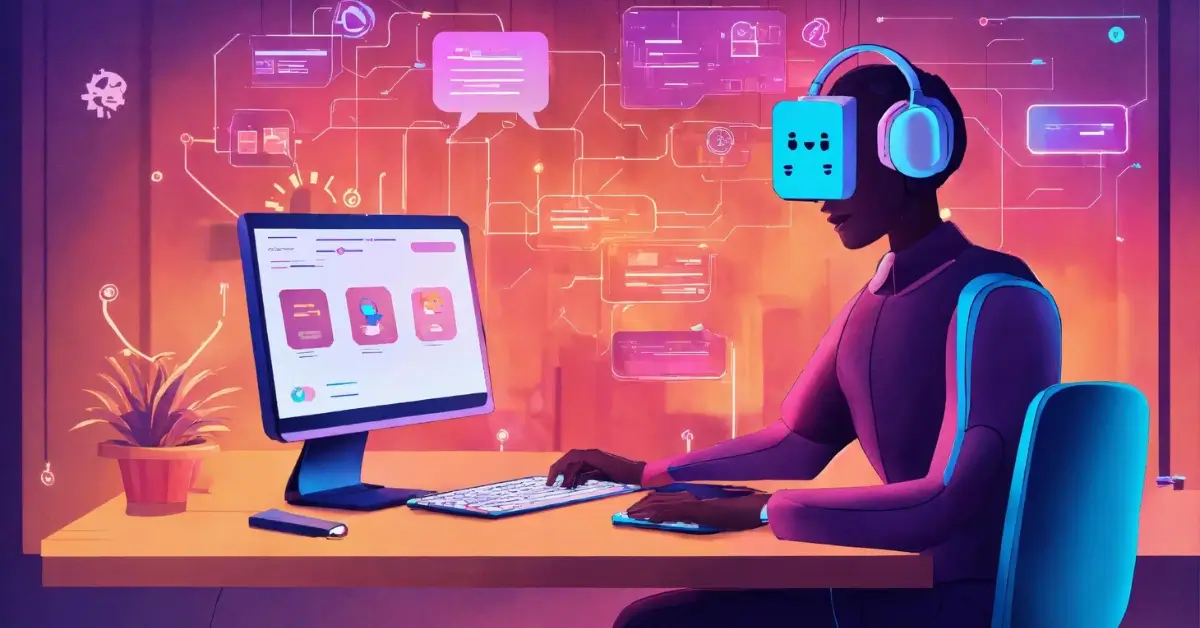In the realm of artificial intelligence, Generative Pretrained Transformers (GPT chatbots) have emerged as powerful tools for generating human-quality text, translating languages, writing different kinds of creative content, and answering questions in an informative way. Their ability to learn from massive amounts of data and adapt to new tasks has opened up a world of possibilities for businesses, researchers, and individuals alike.
Chatbots are becoming increasingly popular, and for good reason. They can be used to provide customer service, answer questions, and even generate creative content. If you’re interested in creating your own custom GPT Chatbot, this blog post will walk you through the process.
Table of Contents
ToggleWhat is a GPT Chatbot?
A GPT chatbot is a chatbot that is powered by the GPT-3 language model from OpenAI. GPT-3 is a powerful language model that can generate text, translate languages, write different kinds of creative content, and answer your questions in an informative way.
Why create your own GPT Chatbot?
There are many reasons why you might want to create your own GPT chatbot. Here are a few:
- To provide customer service: Chatbots can be used to provide 24/7 customer service. This can free up your human agents to handle more complex tasks.
- To answer questions: Chatbots can be used to answer any questions that your customers may have. This can save you time and money.
- To generate creative content: Chatbots can be used to generate creative content, such as blog posts, articles, and website copy. This can help you save time and produce high-quality content.
How to create your own GPT Chatbot
Creating your own GPT chatbot is relatively easy. Here are the steps involved:
- Create an account on OpenAI: If you don’t already have an account on OpenAI, you will need to create one. This is free to do.
- Request access to the GPT-3 API: Once you have an account, you will need to request access to the GPT-3 API. This can be done from the OpenAI website.
- Choose a programming language: You will need to choose a programming language to use for your chatbot. Some popular options include Python, JavaScript, and Java.
- Create a virtual environment: A virtual environment is a way to isolate your code from other projects. This will help to prevent conflicts.
- Install the required libraries: You will need to install the required libraries for your programming language. These libraries will allow you to interact with the GPT-3 API.
- Create a function to call the GPT-3 API: This function will take a text input and return a text output. The text output will be the response from the GPT-3 API.
- Customize your chatbot: You can customize your chatbot by adding your own prompts and responses. You can also add your own personality and style.
- Deploy your chatbot: Once you are happy with your chatbot, you can deploy it to a production environment. This will allow your users to interact with your chatbot.
Frequently Asked Questions
- What is the best way to customize my chatbot?
The best way to customize your chatbot is to add your own prompts and responses. You can also add your own personality and style.
- Can I use my chatbot to generate creative content?
Yes, you can use your chatbot to generate creative content. This can be a great way to save time and produce high-quality content.
- How can I deploy my chatbot?
You can deploy your chatbot to a production environment using a variety of methods. Some popular options include Heroku, AWS, and Google Cloud Platform.
- What is the cost of creating a GPT chatbot?
The cost of creating a GPT chatbot will vary depending on your needs. However, you can expect to pay between $0 and $100 per month for access to the GPT-3 API.
Conclusion
Creating your own GPT chatbot is a great way to provide value to your customers and save time and money. With a little effort, you can create a chatbot that is both informative and engaging.
I hope this blog post has been helpful. If you have any questions, please feel free to leave a comment below.




